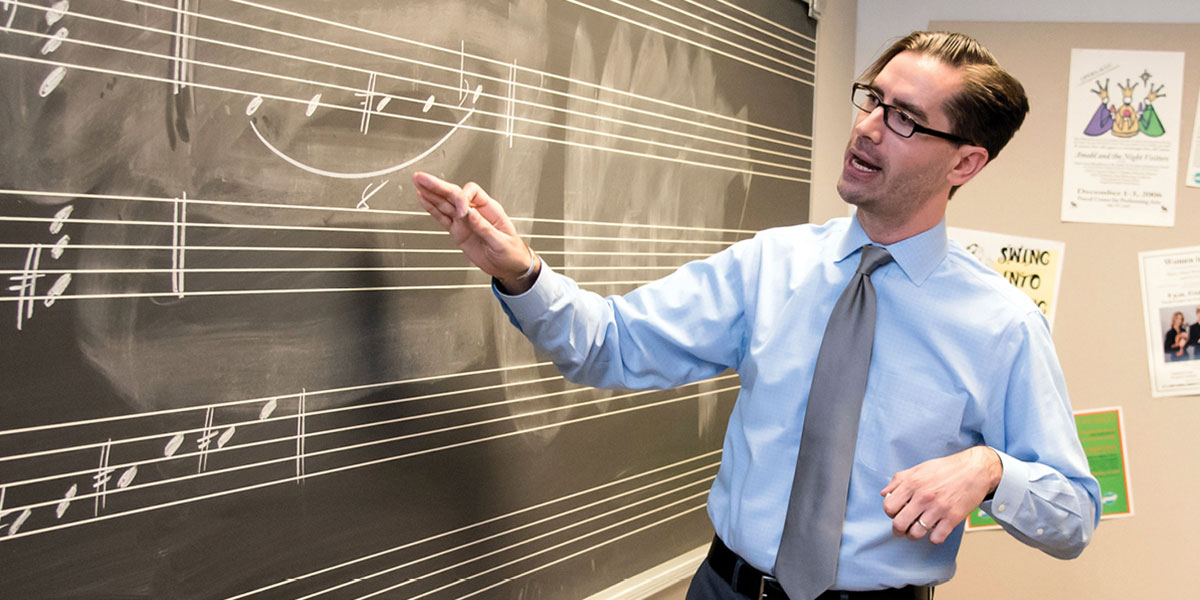
Sabbaticals allow AACC faculty to further pursue their professional expertise and passions and revitalize their teaching with advanced skills and experiences. Afterward, they bring what they learned back to the classroom to the benefit of their students. Here’s a recap on a few recent sabbaticals.
Associate Professor, Music
Fall 2018
While Associate Professor Ian Wardenski, Ph.D. (pictured), was on sabbatical, he composed, rehearsed and recorded his first jazz CD, “Collective Thoughts.” The CD also includes AACC faculty members Jerry Ascione and Frank Russo, as well as Tamara Tucker, Tim Powell and Amy Shook. Wardenski also attended concerts and workshops, and he returned to AACC refreshed and inspired with new ideas and concepts that he shared with his students. The CD is available for purchase from CD Baby, Amazon and iTunes.
Professor and Department Chair, Architecture and Interior Design
Fall 2018
Professor Michael Ryan spent his sabbatical researching how virtual reality is incorporated in the design discipline. He visited local, medium-sized firms to learn about their software and hardware. He also attended conferences to explore industry trends. His knowledge will help students prepare for their future careers.
Associate Professor, Visual Arts
Spring 2018
Associate Professor Lindsay McCulloch used her sabbatical to research abstract theory and painting techniques. She created 11 oil paintings, multiple works on paper and a series of large-scale, abstract oil paintings. The large-scale paintings were shown in two solo exhibitions. From her research, she updated course material for her “Two Dimensional Design” class and proposed a new abstract painting course for the college.
Professor, English, and Gender and Sexuality Studies
Fall 2017
During her sabbatical, Professor Suzanne Spoor, Ph.D., explored the creative process by finishing three short stories and then developing a series of creative writing exercises for students. She felt that many traditional creative writing exercises are too limiting because the brain needs images, color, shapes and textures to process the world fully. Her series of assignments is called the Creative Process Journal. After a year of testing out the concept in her classes, the students reported that it helps them understand the texts, think critically, pull their ideas together and write better essays.
Professor, English
Fall 2017
Using nearly 30 years of experience teaching, Professor Steve Canaday, Ph.D., created a composition textbook during his sabbatical. The textbook is tailored to a community college student and the diversity represented in the community college setting. It provides sentence-level writing skills, reading comprehension strategies, essay level organization, and rhetoric and research skills. Additionally, the exercises in the book are designed to help students figure out what their passions are and find meaning beyond merely preparing for the workforce.